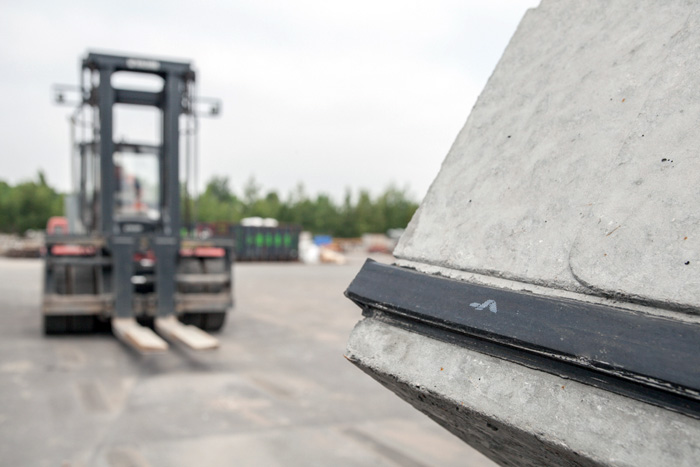New VIP gasket corner joint
9 November 2017Great Britain - VIP Polymers has been awarded a UK patent for a cast-in rubber gasket corner joint designed to reduce the risk of tunnel segment cracking during installation.
The company said that a ‘compliant compressible corner’ gives consistent load performance along the entire perimeter of the tunnel segment gasket. This eliminates the risk of a build-up of pressure at one or more of the gasket’s corners during installation, which could contribute to segment cracking.
A spokesperson for VIP said, “Most cast-in TSGs are made with conventional ‘shot-joint’ corners. During the moulding process, the rubber in these corners fills the compression cavities in the extruded gasket sections, creating a solid rubber corner. When the tunnel segments are installed, the compression of solid corners is very limited, which can result in corner point loading, thus increasing the risk of the segment becoming cracked. The new corner joint is created with a joining process that maintains the gasket profile right to the corner edge. This makes the complete gasket compliant with all specified load requirements.”
When pressed for the manufacturing process of the new gasket, VIP was hesitant to reveal commercially sensitive information for the new product. However, the company was willing to set out the problems associated with traditional gaskets:
“Cast-In tunnel segment gaskets are manufactured by joining together lengths of an extruded profile. The profile is designed with compression holes running through it so that it can collapse into the segment groove during installation while retaining water tightness.
“These are cut to the appropriate length and joined to form corners. The angle of these corners varies depending on the profile of the segment, leading to the creation of a rectangular or rhomboidal or trapezoid shaped gasket.
“Traditionally, the corners have been formed using a method called shot joining. This process involves joining the two lengths of the profile (which have been cut at 90º square ends) using an injection press (which has been manufactured for a pre-determined angle typically 90º, 72º or 108º).
“For rubber to be injected it is preheated, to make it softer and more malleable. The extruded lengths of gasket are placed into a mould with a preformed cavity to create the corner. The malleable rubber is injected under pressure into the cavity and heat is applied to cure the rubber and hold the shape.
“Due to the pressure required, some of the rubber will inevitably travel down the compression channels within the profile. This creates a solid section of rubber at the corners which does not have the same compression characteristics as the rest of the profile.
“As the rubber cannot be compressed it creates a ‘solid’ corner, so the likelihood of cracking and spalling of concrete segments during installation increases. This happens as the segments are pushed together, because the amount of material in the corner exceeds the groove volumes, causing load issues.
“The energy created by this then travels along a path of least resistance which causes segments to crack. Typically, weak points occur toward the corner/edge of the segment where the reinforcement is less effective (segments can be reinforced with steel rebar or fibre). This creates the leak paths that lead to the cracking.
“Due to the nature of the building process, these cracks do not appear until 2-3 rings behind the TBM which means that they cannot be taken out, leading to repairs and potential delays.
“VIP’s new corner jointing process eliminates rubber travelling along the compression holes which ensures that the compression performance at the corners is the same as the rest of the gasket. It also allows VIP to manufacture gasket corners to any angle, therefore perfectly fitting the segment.”

